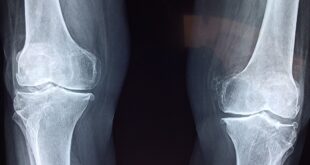The food combining diet has become popular recently. But it has ancient roots in India. It is a type of food philosophy from Ayurvedic diets. Food combining features the principles of a diet back in the 1920s — the macrobiotic diet.
The Pattern of Food Combining
Food combining’s main pattern is to avoid mixing different foods from different categories. The principle is that improper combinations of food may be contradicting the body’s efficient breakdown of foods. This negatively impacts the body’s health. The pattern is strict. It breaks down different foods into essential groups. The individual must mix them in specific times and methods.

Classifications are fats, starches, fruits (melon, sweet, and acidic sub-groups), non-starchy vegetables, and proteins. Many rules oversee the combination of these groups. Finding out and understanding these rules will make a unique impact on an individual’s general health. It may be difficult at first, but the body gets used to the food combinations.
The Rules of Food Combining
The secret to food combining is to eat more of the filling and healthy foods. In addition, a good combination of different foods can speed up weight loss. The old concept of eating soups and salads may even delay weight loss. Combining two to three nutrient sources may help an individual lose weight.
1. Do not combine high-starch foods and high-quality proteins in one meal.
Starchy vegetables must not be in the same meal as protein-rich foods. The reason is that the body digests starch and protein in different ways. Releasing protease must happen to digest proteins. At the same time, the release of amylase must occur to digest carbohydrates. The body must concentrate on digesting one macronutrient to digest. Therefore, one meal must only have one macronutrient — protein, carbohydrate, or fat.
2. Make sure to eat fruits when the stomach is empty.
In the food combining diet, drinking diluted fruit juices or eating fruits while the stomach is empty is important. This can happen early in the morning, as a starter, or in between meals. The individual must not eat it with any other type of food. Fruits must not be categorized as part of a meal or even as a dessert. The belief is that fruits need less energy to digest. These foods move toward the stomach right away, preparing it when a large meal comes.
3. Eat pulses with vegetables.
Legumes are plant proteins with high starch content. Lentils and peas are primary sources of plant proteins. These pulses are sources of fiber and protein. Combining them with the right group of foods allows them to become more digestible. Tempeh and tofu are high in protein. Consuming them with vegetables is ideal.

4. Consume fats with vegetables low in starch.
Protein and fat sources, like nuts, olives, and avocados, go with non-starchy vegetables. This is a good combination. It allows the proteins to go through thorough digestion. Fatty foods combine well with acidic fruits.
Choosing leafy greens is a good choice. The high fiber content of non-starchy vegetables makes it efficient in collecting the fats in fatty foods. Being nature’s broom, fiber is capable of removing the excess fats from the body. This leaves the body free from excess fats and complications from fat accumulation.
5. Eat vegetables with grains
Food combining also suggests eating starchy vegetables and grains must go together in a meal. That way, the body releases only one type of enzyme (amylase) for digestion. The individual can pair foods like potatoes and squash with quinoa, rice, or farro.
The Pros of Following the Rules
Since every meal concentrates on one macronutrient to digest, food combining may improve digestion. Poor digestion manifests through bloating, pain, stomach cramps, and gas. In food combining, mixing up food in a strategic way can improve gastric problems. This diet boosts energy and increases the absorption of nutrients.
Food combining can also help with weight maintenance. In this diet, combining the wrong foods leaves undigested food in the gut. This diet also removes gas production and collection. It spares the individual from indigestion and bloat that often cause discomfort.
Food combining simplifies the process of digestion, allowing the body to get all the nutrients it needs. There is no residue left in the gut. Proper food combining leads to the proper digestion of food. As a result, the individual loses weight. There is also a feeling of lightness in the stomach.
Food Combining Can Improve Your Health and Change Your Life
The right diet can improve your health. With food combining, the body concentrates on breaking down only one macronutrient at a time. This does not complicate the digestion process. It results in easy nutrient absorption. Because there is no residue left in the gut, you don’t get gas or indigestion. Talk to your doctor about this diet to determine if it is right for you.


